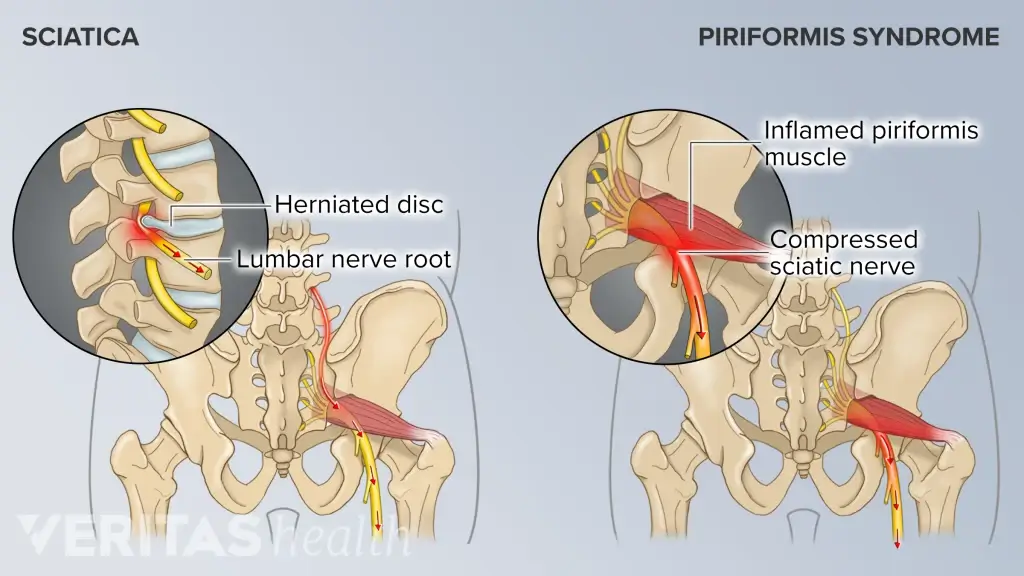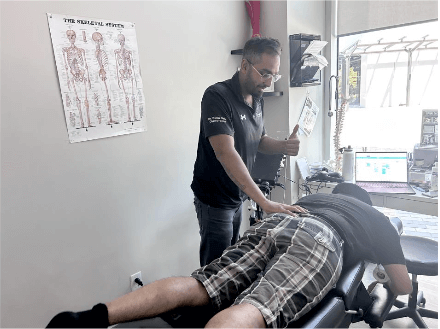Do You Feel Pain in Your Glutes That Shoots Down Your Leg? This kind of pain is easy to mistake for sciatica, but in many cases, another condition may be causing discomfort.
Piriformis syndrome is a common but often overlooked cause of buttock and leg pain. It happens when the piriformis muscle becomes inflamed and presses against the sciatic nerve. This can lead to a range of symptoms, from a dull ache to sharp, radiating pain that travels down the leg. (Boyajian-O’Neill et al., 2008)
The piriformis muscle plays an important role in rotating the hip and stabilizing the pelvis. It sits right next to the sciatic nerve, and in some people, the nerve even runs through the muscle. This close relationship means that when the piriformis tightens or spasms, it can directly affect the nerve, leading to pain, tingling, numbness, or weakness in the leg.

Several factors can contribute to the development of piriformis syndrome. These include sitting for long periods, poor posture, repetitive movements such as running or stair climbing, direct trauma to the buttocks, or underlying biomechanical issues like leg length differences or weak core muscles. Motor vehicle accidents are another common cause, particularly if the impact causes a shift in the pelvis or lower back.

If you recognize these symptoms, it is important to get a proper assessment. Piriformis syndrome shares symptoms with other conditions, including herniated discs and spinal stenosis, and accurate diagnosis is key to effective treatment.
At Pain Free Health Clinic, we use a holistic and evidence-informed approach. Treatment often begins with a thorough physical assessment to determine whether the piriformis muscle is the source of your pain. If confirmed, your treatment plan may include:
These treatments help reduce nerve pressure, restore mobility, and prevent symptoms from returning.
Untreated piriformis syndrome can lead to chronic pain and reduced quality of life. Early and consistent care improves outcomes and helps you return to daily activities without discomfort. Many patients notice a significant reduction in symptoms within a few weeks when following a structured rehab plan. (Probst et al., 2019)
If your pain starts in the buttocks and radiates down the leg, or if sitting for long periods makes it worse, it is a good idea to get checked by a physiotherapist. With the right care, piriformis syndrome is highly treatable, and most people recover well.
Pain Free Health Clinic has locations across South Surrey, Richmond, Ladner, Queensborough, and Langley. Our team is here to help you move better and feel better with care that is personalized to your body and lifestyle.
Boyajian-O’Neill, L. A., McClain, R. L., Coleman, M. K., & Thomas, P. P. (2008). Diagnosis
and management of piriformis syndrome: An osteopathic approach. The Journal of the
American Osteopathic Association, 108(11), 657–664. https://doi.org/10.7556/jaoa.2008.108.11.657
Probst, D., Stout, A., & Hunt, D. (2019). Piriformis syndrome: A narrative review of the
anatomy, diagnosis, and treatment. PM&R, 11(S1), S54–S63. https://doi.org/10.1002/pmrj.12299